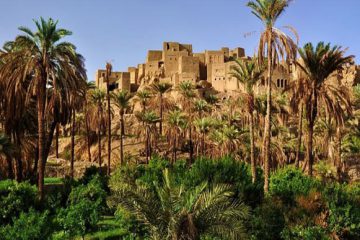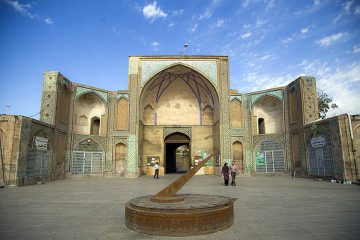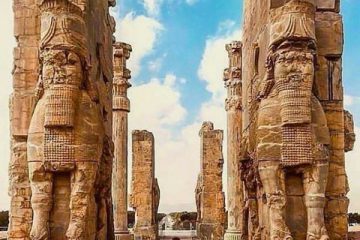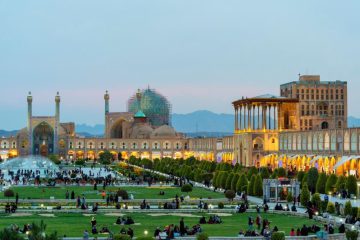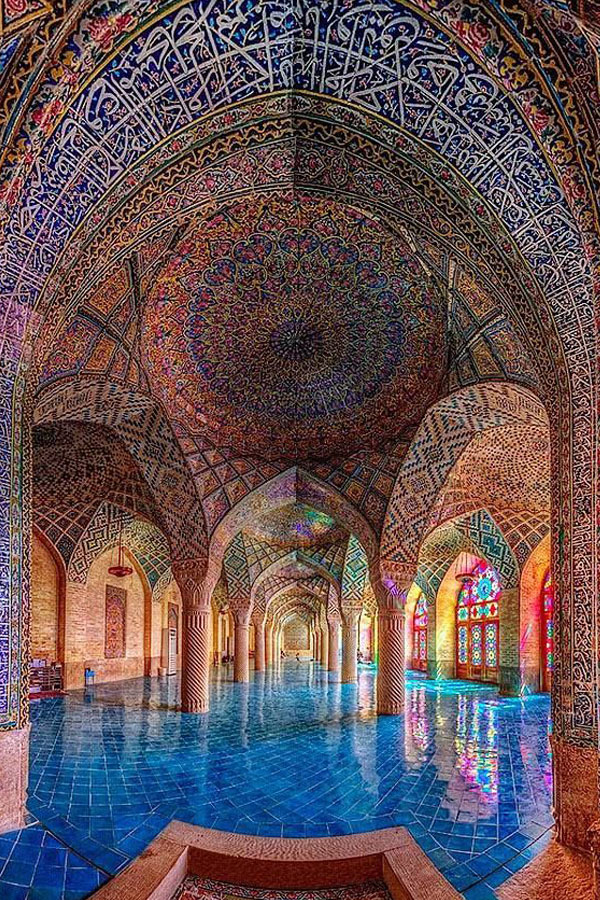
Shiraz: CITY OF ROSES AND NIGHTINGALES
Shiraz: CITY OF ROSES AND NIGHTINGALES
The Fars province has an area of 122,608 sk.km and a population of 4.851 million. It is located in the mid-south west of Iran and is surrounded by the following provinces Esfahan,Kohgilue and Boyr Ahmad and Yazd in the north, Bushehr in the west, Kerman in the east and Hormozgan to the east. The capital of Farz province is Shiraz. The highest point in Fras province, is Bol peak which is 3943 m high. During the Elamite period (2000 BC), this land was called Tirazis. Today’s name of Shiraz city is derived from Tirazis. Fars province is known for its ancient sites which date back to Achaemenid and Sassanid eras. The hottest months are July and August although rarely exceeding 40 degree and January, the coldest month, can occasionally be colder than – 5 degrees.
Persepolis
Persepolis the Greek name (from parses, polis for Persian City) for the ancient city of Parsa or Takhte-Jamshid in Persian was the majestic ceremonial capital of the ancient Achaemenid Empire, over 2500 years ago. This city was founded by Darius I (also named Darius the Great). The Great City of Persepolis was constructed in terraces up from the River Pulwar to rise on a larger terrace of over 125,000 square feet. The Great palace built by Xerxes I was composed of a grand hall that was eighty-two feet in length with four large columns, the entrance of the Western Wall. Persepolis was deplorably plundered, sacked and demolished by a conflagration following its capture by Alexander the Great. Even though it is ruined, the site depicts the pinnacle of ancient Iran’s political and architectural achievements. The UNESCO World heritage site is situated about 70 kilometers northeast of Shiraz.
The Gate of All Nations
Pasargadae
Pasargadae was the dynastic capital of the Achaemenid Empire founded by Cyrus the Great, in the 6th century BC. Its palaces, gardens and the mausoleum of Cyrus are prominent samples of magnificent Achaemid art and architecture and second to none testimonies of Persian civilization. Pasargadae was the capital of the first great multicultural empire in Western Asia. Spanning the Eastern Mediterranean and Egypt to the Hindus River, it is mentioned as the first empire that treasured the cultural variety of its diverse peoples. 50 kilometers north of its more renowned successor it’s not the most convenient destinations, but the noticeable sincerity of Cyrus the Great’s ancient tomb, now surrounded by inhospitably harsh terrain, justifies the effort.
Karimkhani Citadel
This construction, the largest and the most prominent building of the Zand dynasty, has been the residence of Karimkhan and where he ruled from. With for circular towers, one of which in the southern corner has a specific slope. Reconstruction is being continued till now however, Decoration of the Citadel has been annihilated unfortunately. The area of whole place is 12800 square meters and each tower is 14-high meters. Above the entrance is a huge portrait of the killing of White Devil by Rustam. Painted during Ghajar dynasty which was added later to the Arg. Inside the Arg, there are various constructions, the north building was utilized while the south one was appropriate for summer use and west building was usable in all seasons. The facade of the castle looks primitive in contrast, inside the room shave dazzling decorations and design which seems magnificent and it’s the specification of that period. The citadel also consists of fountains and beautiful gardens and fragrant flowers which are now being revamped and restored.
Vakil Bazaar
Shiraz’s ancient market place and trading district is composed of several Bazars including hundreds of shops and stalls dating from various periods. The most prominent one is Vakil Bazaar which is cruciform structured and commissioned by Karim khan as part of his plan to make Shiraz into a great trading center. Satisfyingly labyrinthine, the Bazaar is the place for purchasing carpet rugs, spices, jewelry, and household goods. The wide vaulted brick avenues are Masterpieces of Zand architecture with the design ensuring the interior remains cool in summer and warm in winter. Stumbling across teahouses, courtyards, caravanserais, and the traditional bathhouse, it may take you more than one afternoon to explore entirety of the Vakil bazaar. The arched ceilings are a fine reminder of 18th century Zand architecture, and make for a pleasantly cool atmosphere through which to wander.
Mausoleum of Hafez
Hafez was reciting Quran from Memory as he become known, apart from memorizing the Quran at an early age, Hafez also became interested in literature and wrote plenty of verses still used in every day speech. Hafez’s collections of poems, known as Divan-e Hafez and has a strong mystical quality and is often virtually untranslatable; however, much of the book is also about nightingales, courtship and wine. Hafez is disputably the most loved and respected poet in the enormous canon of Persian literature. Considered the master of the Ghazal (a short, amorous, rhyming poem), Iranians from all walks of life can quote his verses on demand. His Mausoleum rest in a well-kept garden in northeast Shiraz; more than a tourist attraction, it functions as a site of pilgrimage for his proponents all over the world. Have your fortune told, visit the onsite teahouse, and consider the playful nuances of his lyrical ingenuity as you meander around the comprehensive grounds.
Tomb of Sa’di
The 13th century poet Sa’di was an important precursor to Hafez, and is one of the most treasured ancestors of modern day shirazis. He is renowned for the quality of his writings and for the depth of his social and moral thoughts. Saadi is widely recognized as one of the most outstanding and greatest poets of the classical literary tradition of Iran. Sa’di’s most prominent works, the Golestan (Rose Garden) and Bustan (Garden of trees) have been translated into many other languages. Bustan is completely in verse and epic metre and composed of stories while Golestan is mainly in prose and contains stories and personal anecdotes. Many of his pithy maxims have attained a proverbial status, and he is widely admired for the enduring simplicity of his verse. His tomb is situated nearby Hafez’s Mausoleum and worth visiting on the same day. The fascinating underground teahouse offers a cool spot to refresh yourself after discovering the garden of Roses and Cypress trees.
Eram Garden
Eram Garden (Bagh-e Eram), situated along the northern shore of the Koshk River in Shiraz, is one of the most well-known and gorgeous Persian gardens in all of Iran. It should be mentioned that the word ‘Eram’ is the Persian version of the Arabic word ‘Iram’ which means heaven in Islam’s holiest of books, the Qur’an. Shiraz is famed for its cultivation of fine gardens, and Eram is disputable the model par excellence. Eram falls within Shiraz University’s botanical gardens, and is replete with Cypress trees, trimmed hedges, and rosebushes. At its center is a little pool and a marvelous Qajar-era palace, though it is closed to the public. The garden is situated just north of the Khoshk River, opposite the university.
any question about Shiraz: CITY OF ROSES AND NIGHTINGALES ? tours of iran is here to help you.



